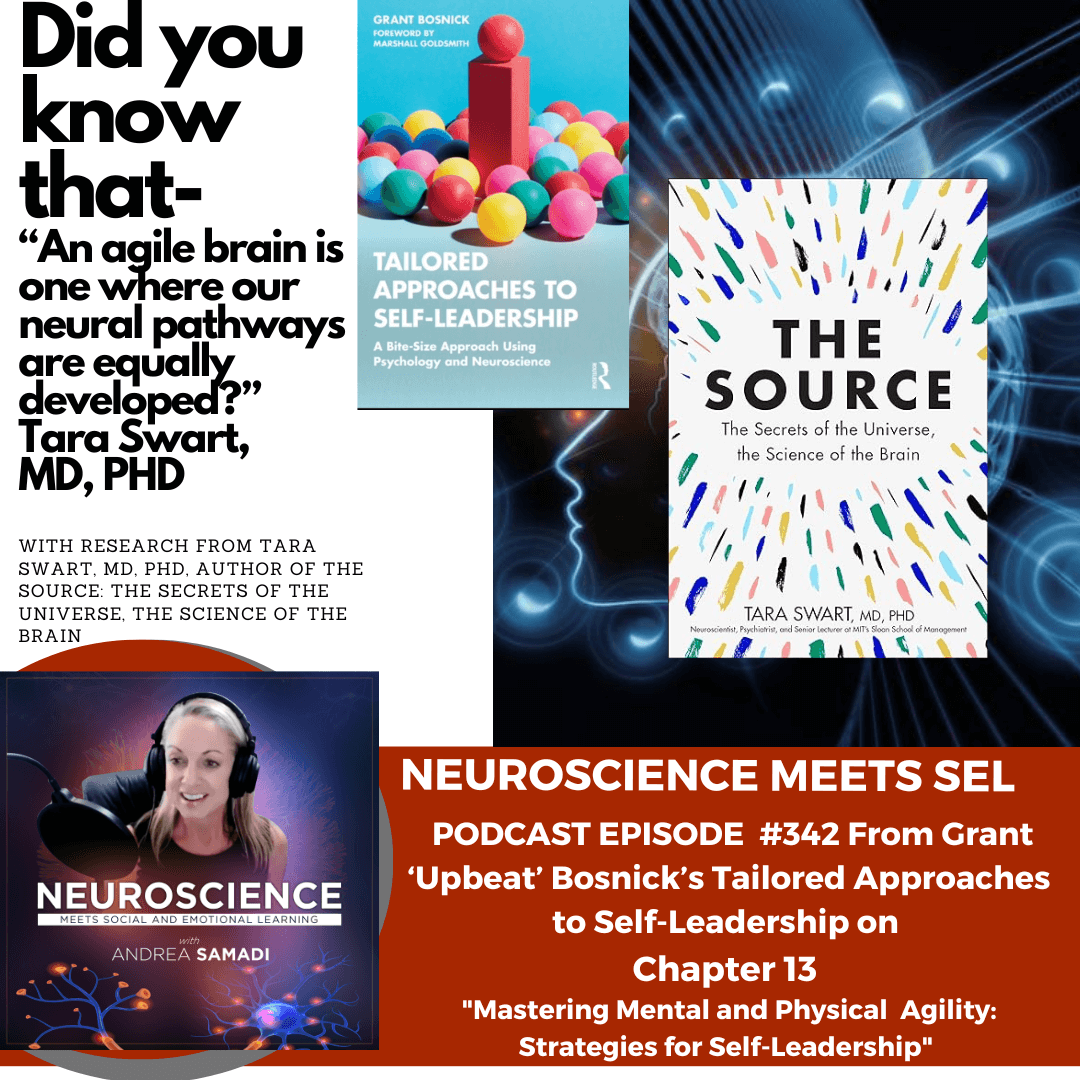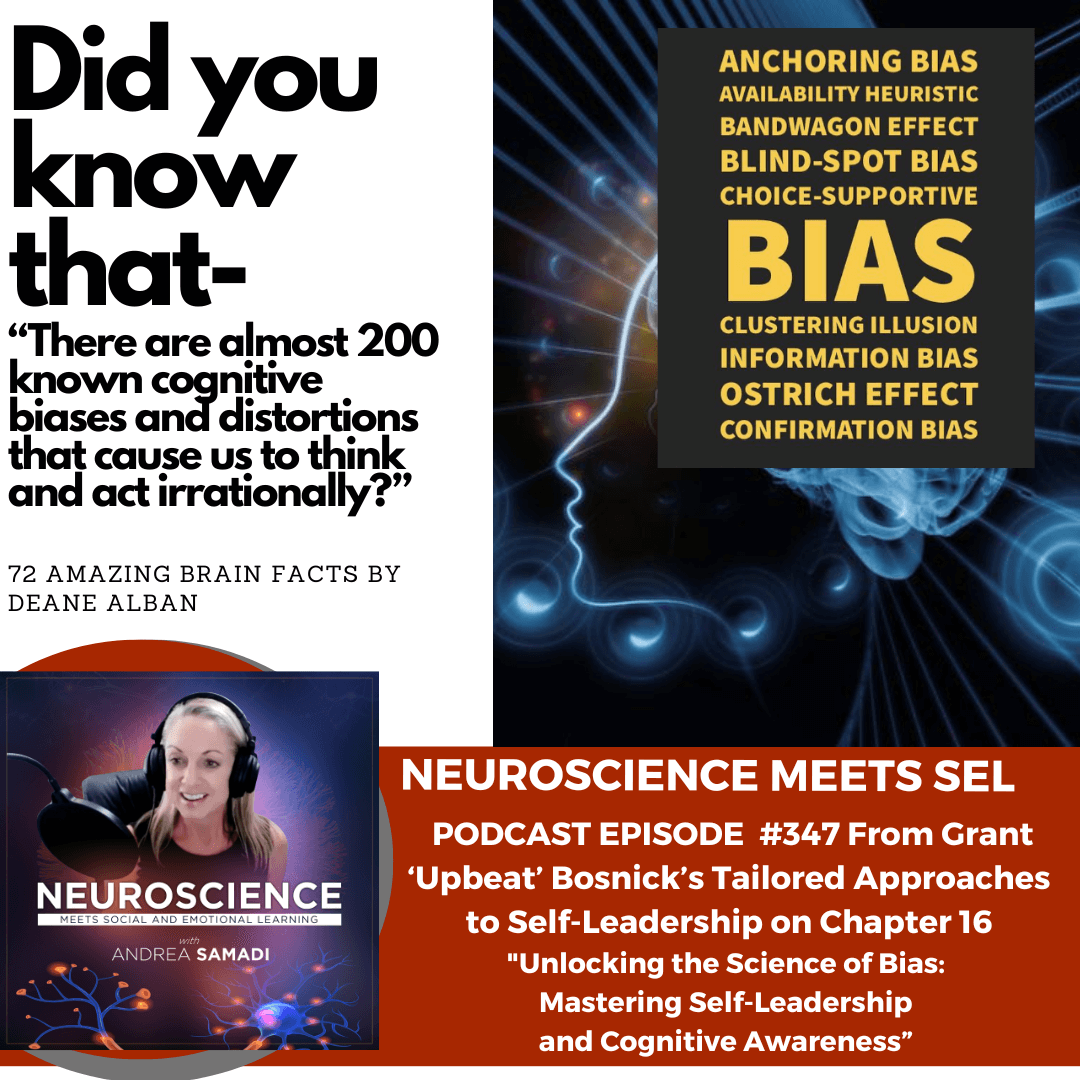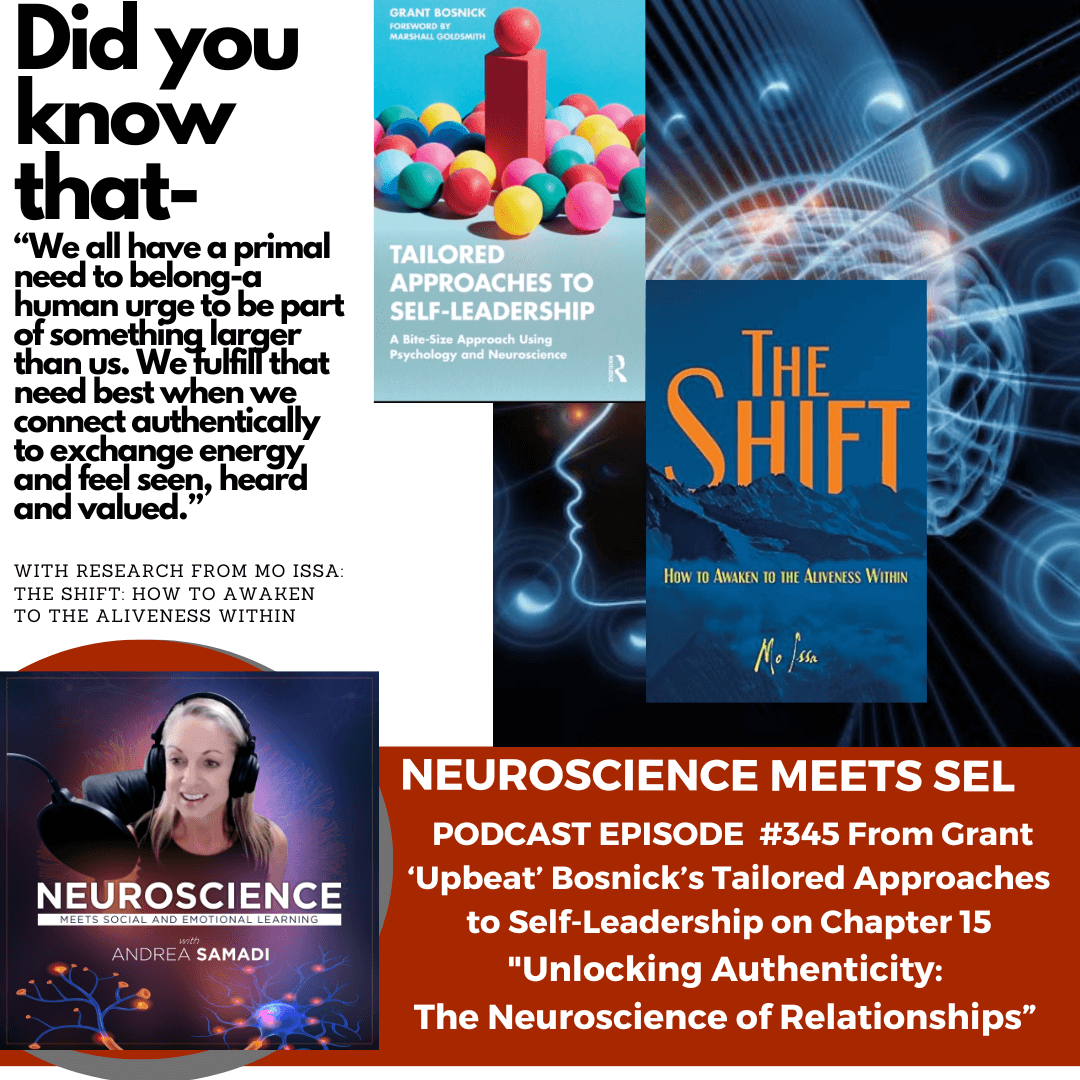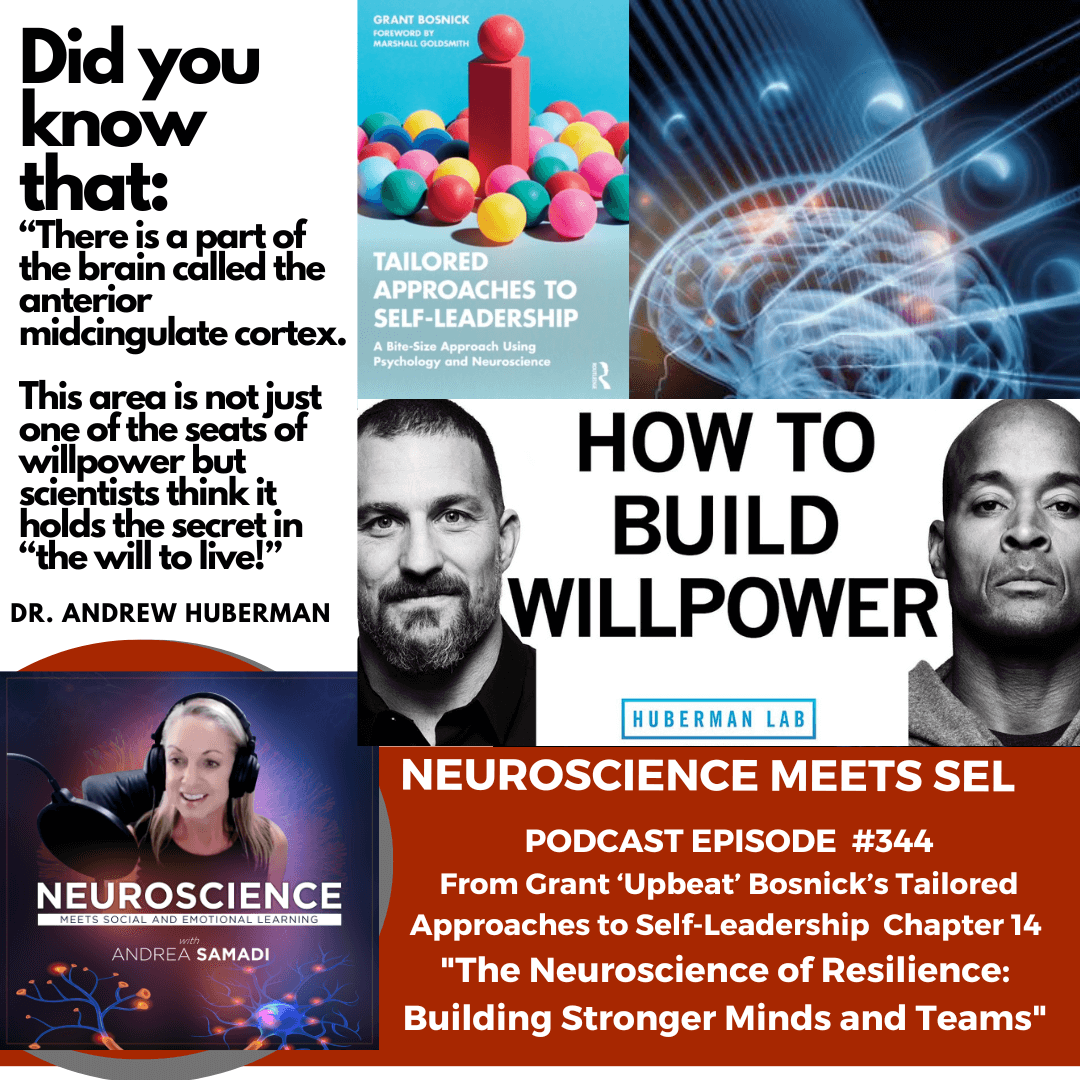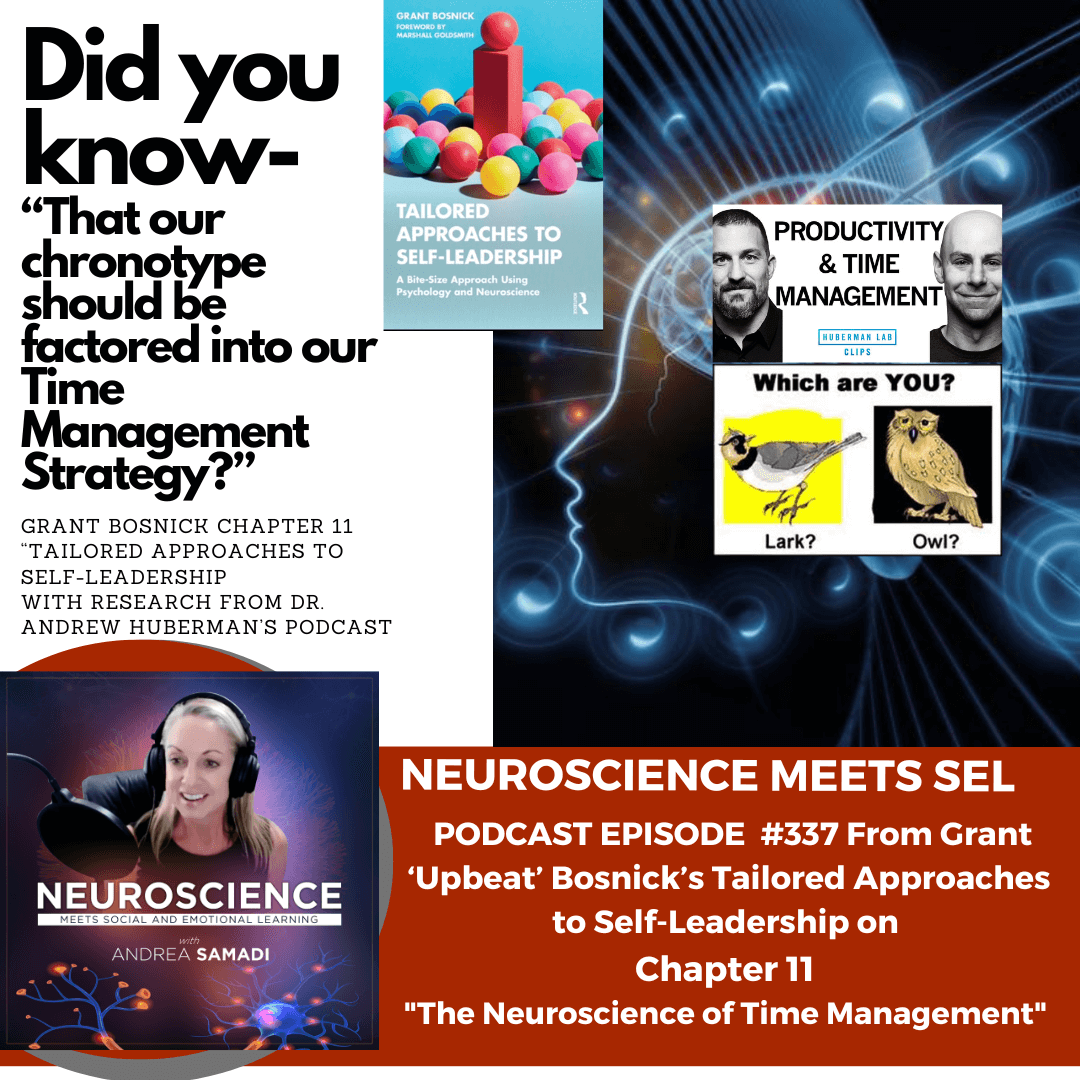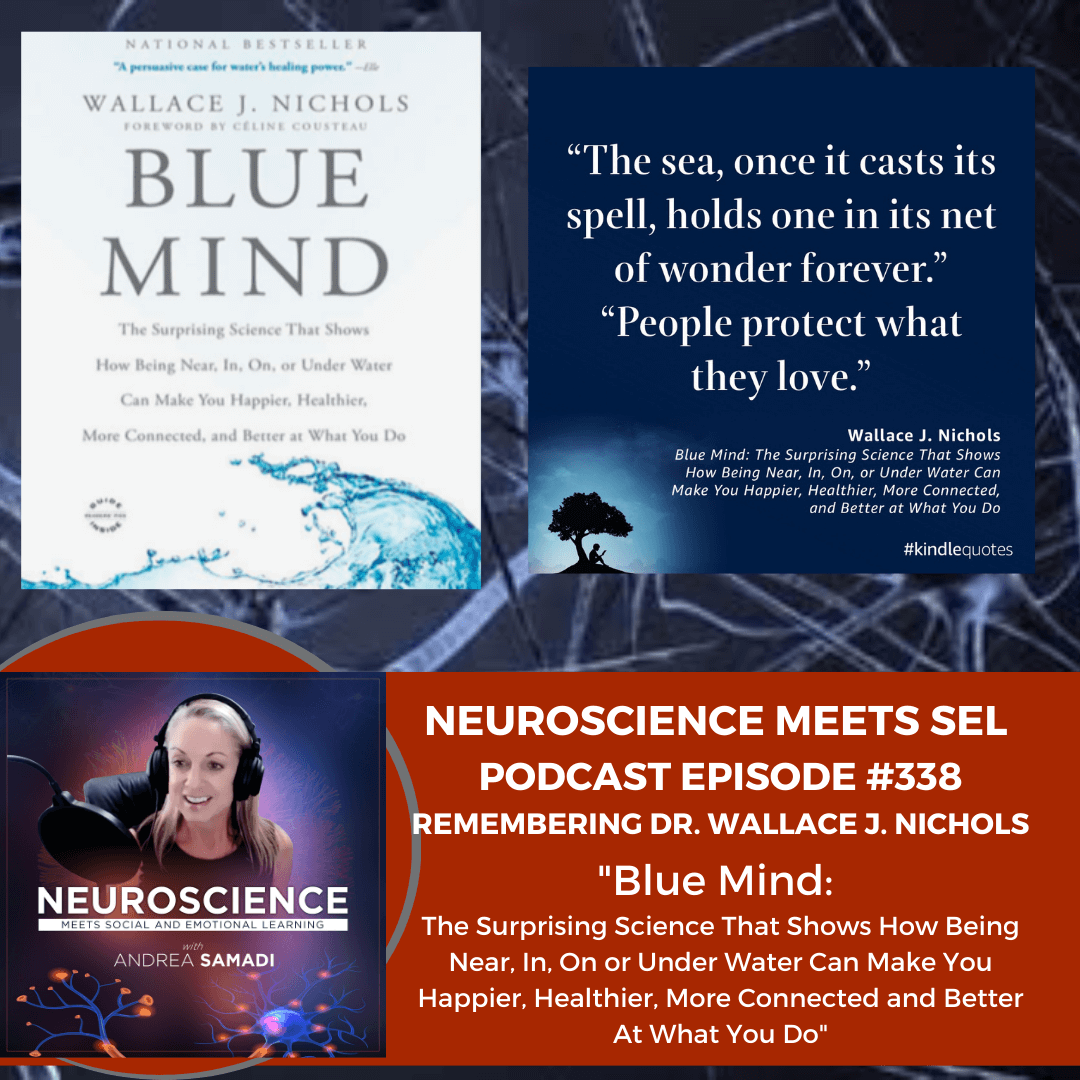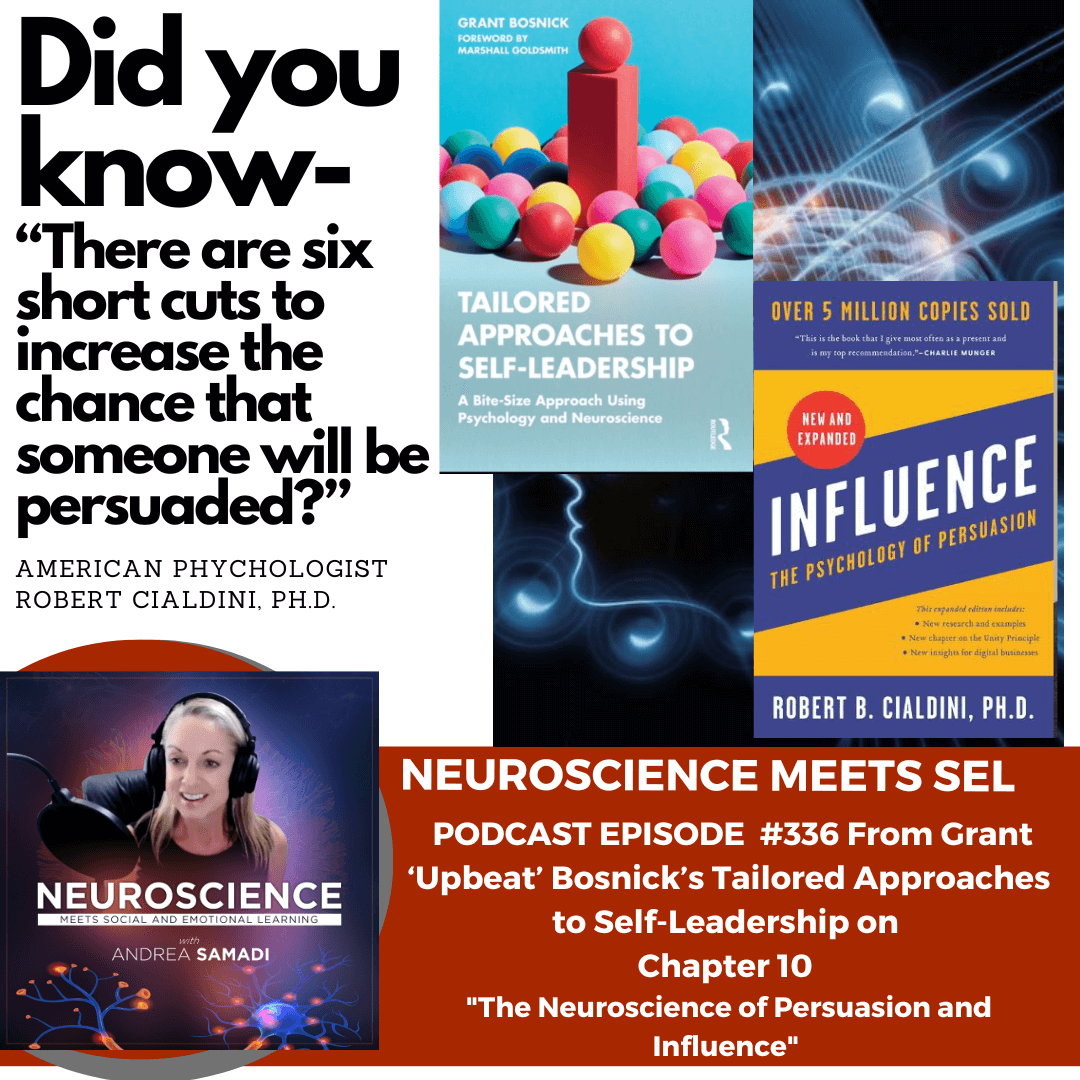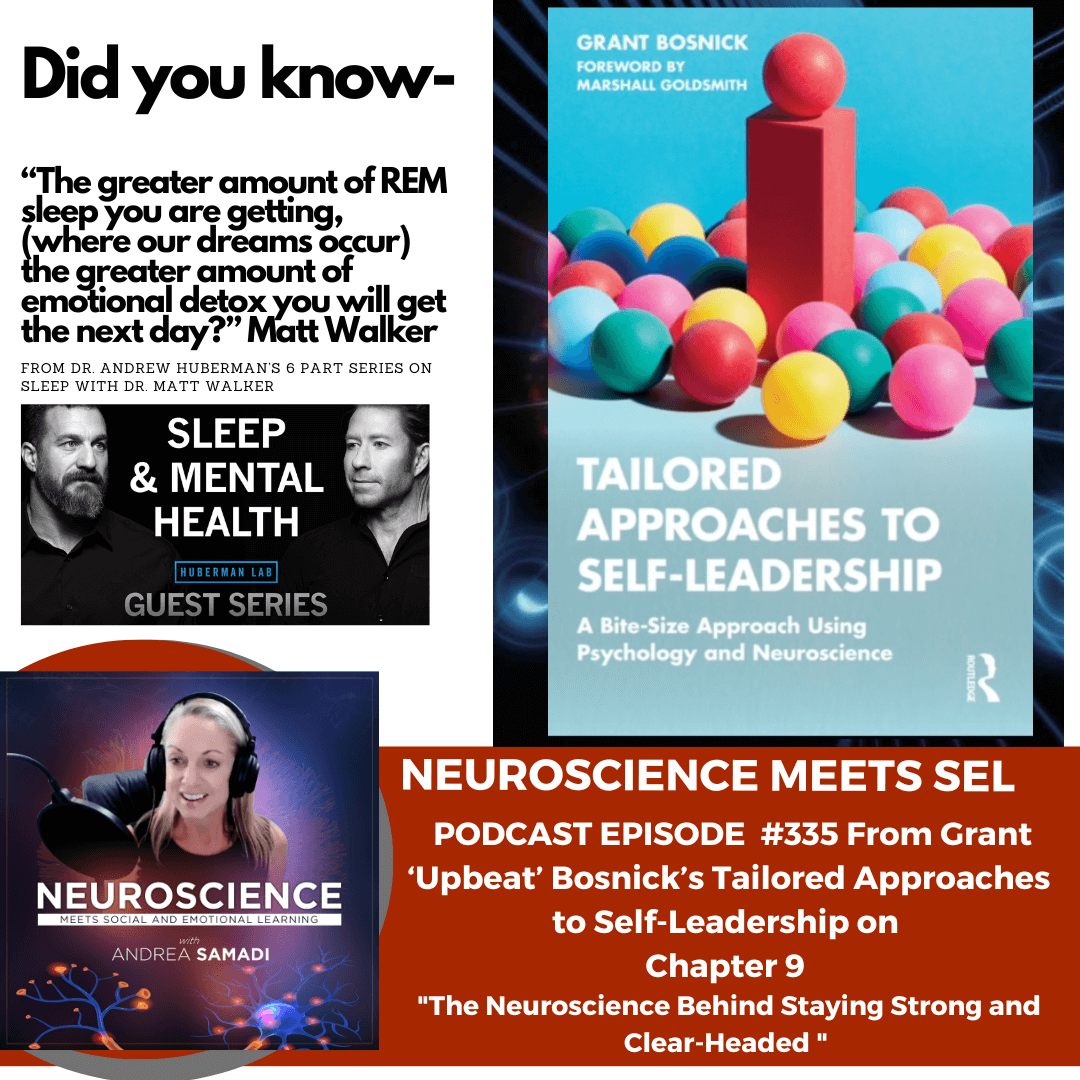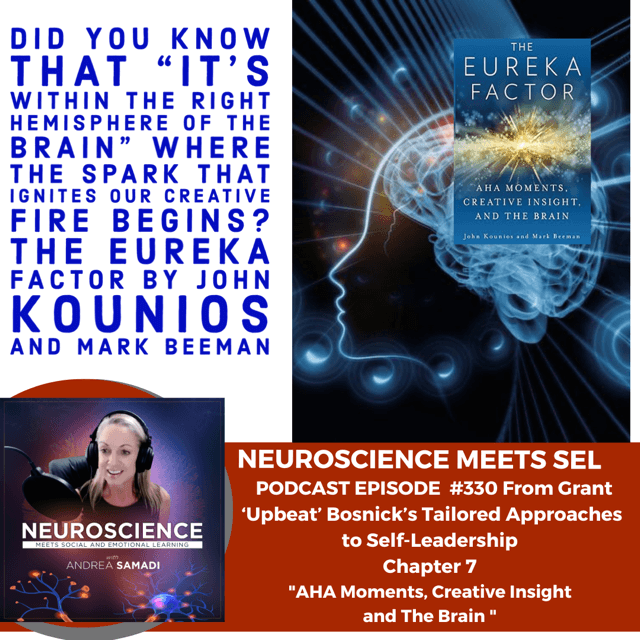Mastering Mental and Physical Agility: Strategies for Self-Leadership Insights from Grant Upbeat Bosnick (Chapter 13)
Description
Welcome back to Season 12 of the Neuroscience Meets Social and Emotional Learning podcast! In episode 342, we continue our 18-week self-leadership series inspired by Grant Bosnick's book, diving deep into Chapter 13, which focuses on the neuroscience of agility.
Join Andrea Samadi as she explores how physical and mental agility play critical roles in our ability to handle sudden changes and stressors. Discover practical strategies to enhance your mental agility, build resilience, and thrive in the face of adversity.
This episode not only highlights the importance of maintaining physical fitness but also delves into the science behind mental flexibility. Learn how to identify and manage your stressors, strengthen your neural pathways, and become anti-fragile in both your personal and professional life.
Stay tuned for insights from neuroscientist Tara Swart and actionable tips to improve your brain's agility, ensuring you are better prepared to navigate life's challenges. Don't miss this enlightening episode and the upcoming interview with Dr. Sui Wong on resilience!
On today's episode #342 we continue with our 18-Week Self-Leadership Series based on Grant Bosnick’s “Tailored Approaches to Self-Leadership: A Bite Size Approach Using Psychology and Neuroscience” that we first dove into with our interview on EP #321[i] the end of January. The goal was that each week, we focused on learning something new, (from Grant’s book) tied to the most current neuroscience research, that builds off the prior week, to help take us to greater heights in 2024. So far, it’s taken us 8 months to cover the first 13 chapters thoroughly, and we still have 6 chapters to go. After this week on agility, we have chapter 14 on resilience, 15 on relationships and authenticity, 16 on biases, 17 on trust, 18 on empathy and the final chapter 19 (and one of my target areas to focus on this year), the topic of presence. When we finish each of these chapters, we will put them all together, with a review of each one, in one place. It really has surprised me that a thorough study of this book will take the entire year to complete.
On today's EPISODE #342 we will cover:
✔ The Neuroscience of Mental and Physical Agility
✔ An overview of our personal and professional stressors
✔ Why being antifragile can help us overcome life’s obstacles and challenges
✔ Characteristics of an Agile Brain
✔ 6 Pathways of an Agile Brain
✔ 4 STEPS to Developing an Agile Brain for Future Problem Solving Success
For Today, EPISODE #342, we are moving on to Chapter 13, covering “The Neuroscience of Agility” which came out as a low priority for me with the with 0% (Pathway 5) along with Change and Resilience. If you’ve taken the leadership self-assessment[ii], look to see if Agility (in Pathway 5) along with change and resilience, is of a low, medium or high priority for you to focus on this year.
I was surprised to see this topic showing up with a low priority, not because this topic is something that I don’t think about daily, but it was when I read the first few paragraphs of Grant Bosnick’s chapter 13, on Agility, where I was reminded that we are talking about physical agility, in addition to mental agility, and as I’m getting older, I notice this area requires extra effort to stay on top of. While the self-assessment says this is not an area of focus for me, it’s one of my TOP priorities at the moment.
Grant Bosnick opens up this chapter by talking about a basketball player who pivots by “maintaining one foot having contact with the ground without changing its position on the floor and utilizes the other foot to rotate their body to improve position while in possession of the basketball. In life and business, when we are faced with a change or challenge immediately in front of us (Bosnick says) it is the same.” (Chapter 13, Bosnick, Tailored Approaches to Self-Leadership). He reminds us that “in basketball, to be agile and pivot, a player needs to be physically fit and have strong ankles, otherwise they may injure themselves in the moment of stopping suddenly.
Reading this paragraph took me back to my 20s when I was a teacher in Toronto. I loved basketball. So much so that I spent some of my weekends being trained as a basketball coach where I learned drills directly from one of the Toronto Raptor’s coaches themselves. I remember taking these drills to a boy’s PE class, and watched in amazement at the skill of these young men, playing a sport, where I honestly thought there were players in that PE class who should have gone pro. I watched them pivot, and move in ways that I knew I never could. One student worked with me after class, trying to teach me to walk and pass the ball through my legs at the same time, and after an hour, I just gave up. It took these young athletes many years of practice outside of their gym time to develop these skills. Thinking back now, to those days, a few decades later, I know that while I don’t have the same physical agility as I did years ago, and I definitely can’t walk and pass a basketball through my legs at the same time, I still put exercise at the top of my list, and know that when I put in the time here, this helps (not hurts) my ability to pivot maybe not like those basketball players, but enough to be prepared physically, to handle sudden change that inevitably will come my way in life. And while I know that we can’t all be at the same level physically, (depending on the amount of time we can dedicate here) we ALL have the same advantage when it comes to the ability to strengthen our mental agility.
This is where Grant Bosnick takes us in his book, reminding us that “in business or life, when we are faced with a challenge or a change that makes us stop suddenly in our course of action. At that moment, we need to have mental agility to be strong in that moment… (reminding us that) we all face stressors and challenges in life. We need to push through, adapt and thrive in the moment, so that we can pivot, see the opportunities and come out even stronger on the other side.” (Chapter 13, Bosnick, Page 145)
Stressors and Triggers
Bosnick covers “various stressors or triggers that may cause us to stop our course of action (with) ways to improve our mental agility and ability to pivot.” (Chapter 13, Bosnick, Page 145).
On Table 13.1 Bosnick lists common stressors in the workplace, in our personal lives and I think he’s got ALL of the stressors covered. I looked at what is currently stressing me out (in my work and personal life) and they are ALL on Bosnick’s list in some form. I think that it’s easy to get overwhelmed with work and personal stressors, that I even forgot about daily stressors like traffic, or road closures, not having enough time for the daily exercise, or things that are important to us, or those days where I fall short on sleep, and know I’ll pay for it somehow.
Bosnick does tie chapter 9 on emotion regulation into this chapter, with strategies to overcome our daily life stress, and when we look at the Neuroscience of Mental Agility next, we will connect emotion regulation with a strategy from Tara Swart, MD, PhD, a neuroscientist and author of The Source: The Secrets of the Universe, the Science of the Brain for improving and strengthening our neural pathways, to improve our brain agility (or mental agility).
Before we can strengthen our mental agility, it helps to know what is stressing us out. I was actually talking about this during the week with one of my good friends from high school. We throw ideas back and forth, and I mentioned that as certain stressors were piling up in my daily life, I was getting to the “end of my rope with them.” She gave me a good analogy, and shared that we can pile up all of our stressors on a book shelf, until we reach our breaking point, and the book shelf breaks. I think it’s good to be aware of our breaking points, and how much we can handle at once. Bosnick suggests an activity where we identify all of our stressors.
IDENTIFYING OUR STRESSORS
- First, look at the stressors on Bosnick’s list, (Table 13.1) and see if you can identify what is stressing you out. I think these days we can also circle workload, and lack of time in our work day, and I’ve circled injury with my girls who are both facing injuries from competitive gymnastics at the moment. Look and see what your stressors are.
Bosnick suggests next to uncover the magnitude of these stressors by rating them on a scale of 1-5.
Here’s where our mental agility comes into play. Bosnick introduces three terms from the book Antifragile by N Taleb[iii] where there are three types of systems, organizations or people.
- The fragile: which is like an egg and breaks under stress. No one wants to be labeled as fragile.
The robust: which is like a phoenix, when destroyed comes back exactly as it was before. This is a step in the right direction, but who wants to emerge from challenge the same as before?
The antifragile: gets stronger from uncertainty—like the Hydra from the Greek myth where you cut off one head, two grows back in its place. It gets stronger from the sudden change.
When we face challenges, changes and stressors, we need to become antifragile in the process according to Grant Bosnick. He also mentions resilience that we will cover next in chapter 14, and have covered this topic often on this podcast[iv] with EP 135 “Using Recovery to Become Resilient to Physical, Mental and Emotional Stressors.” This episode came from some of the biggest AHA moment from EPISODE #134[v] with Kristen Holmes, the VP of Performance Science of WHOOP<a href='https://andreasamadi.podbean.com/e/brain-fact-friday-using

